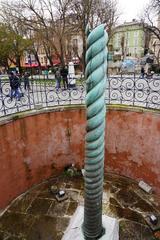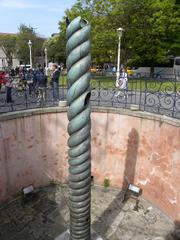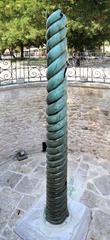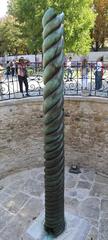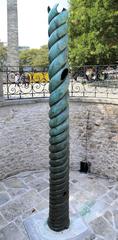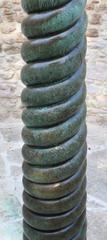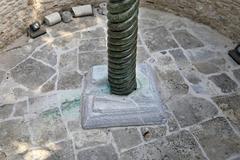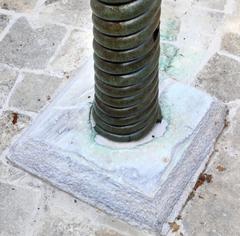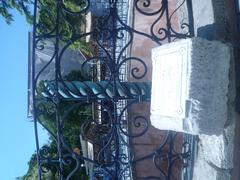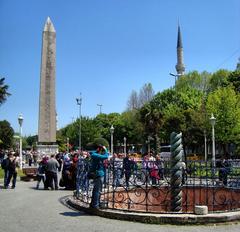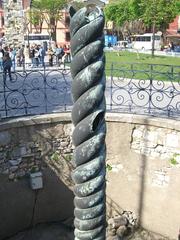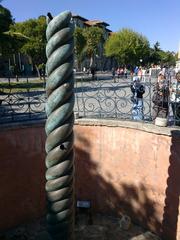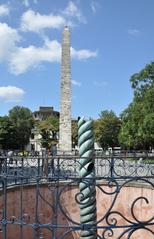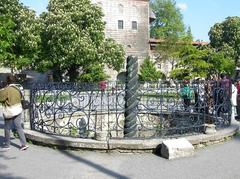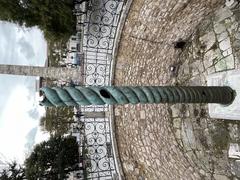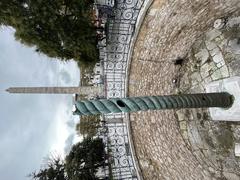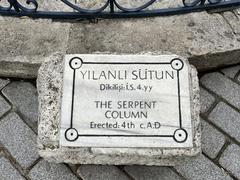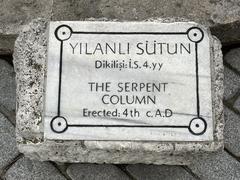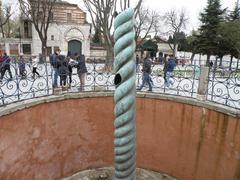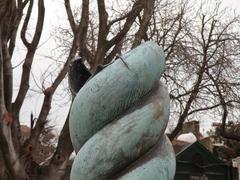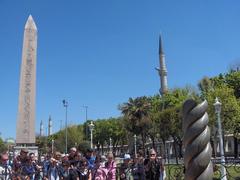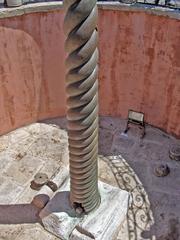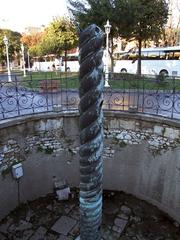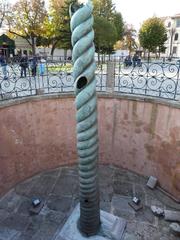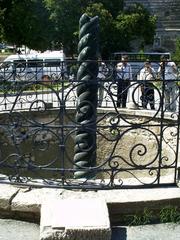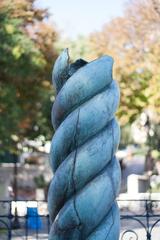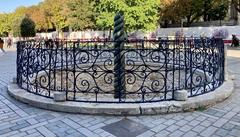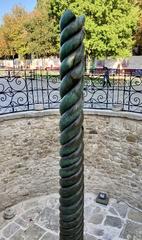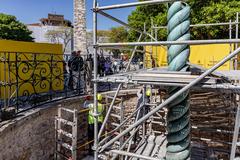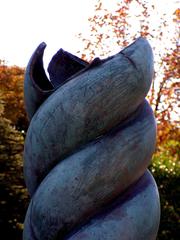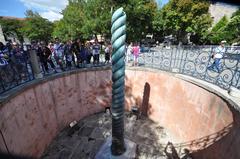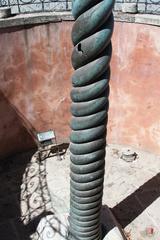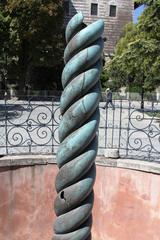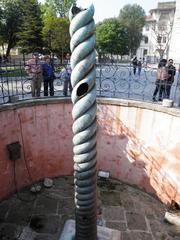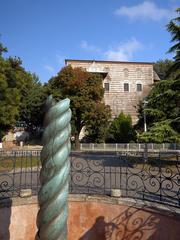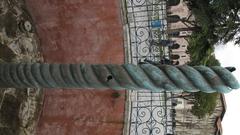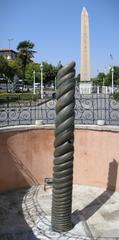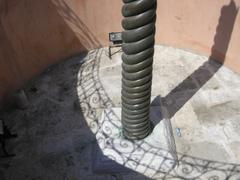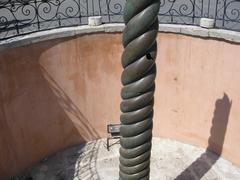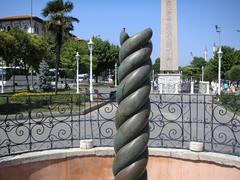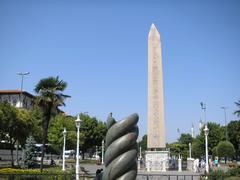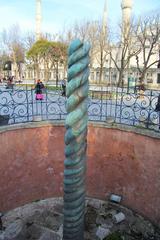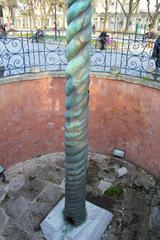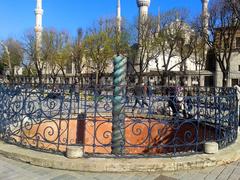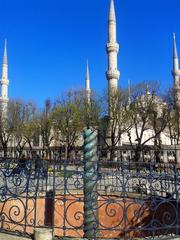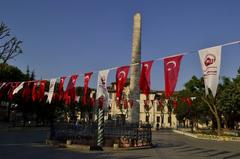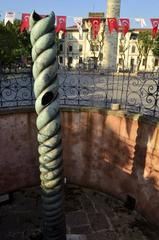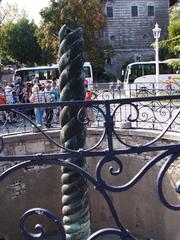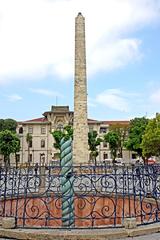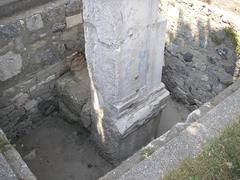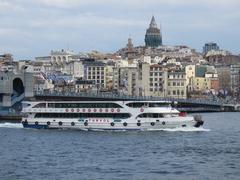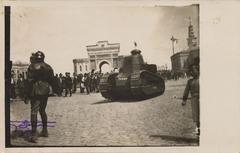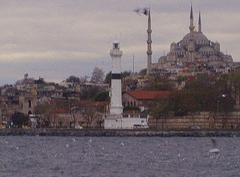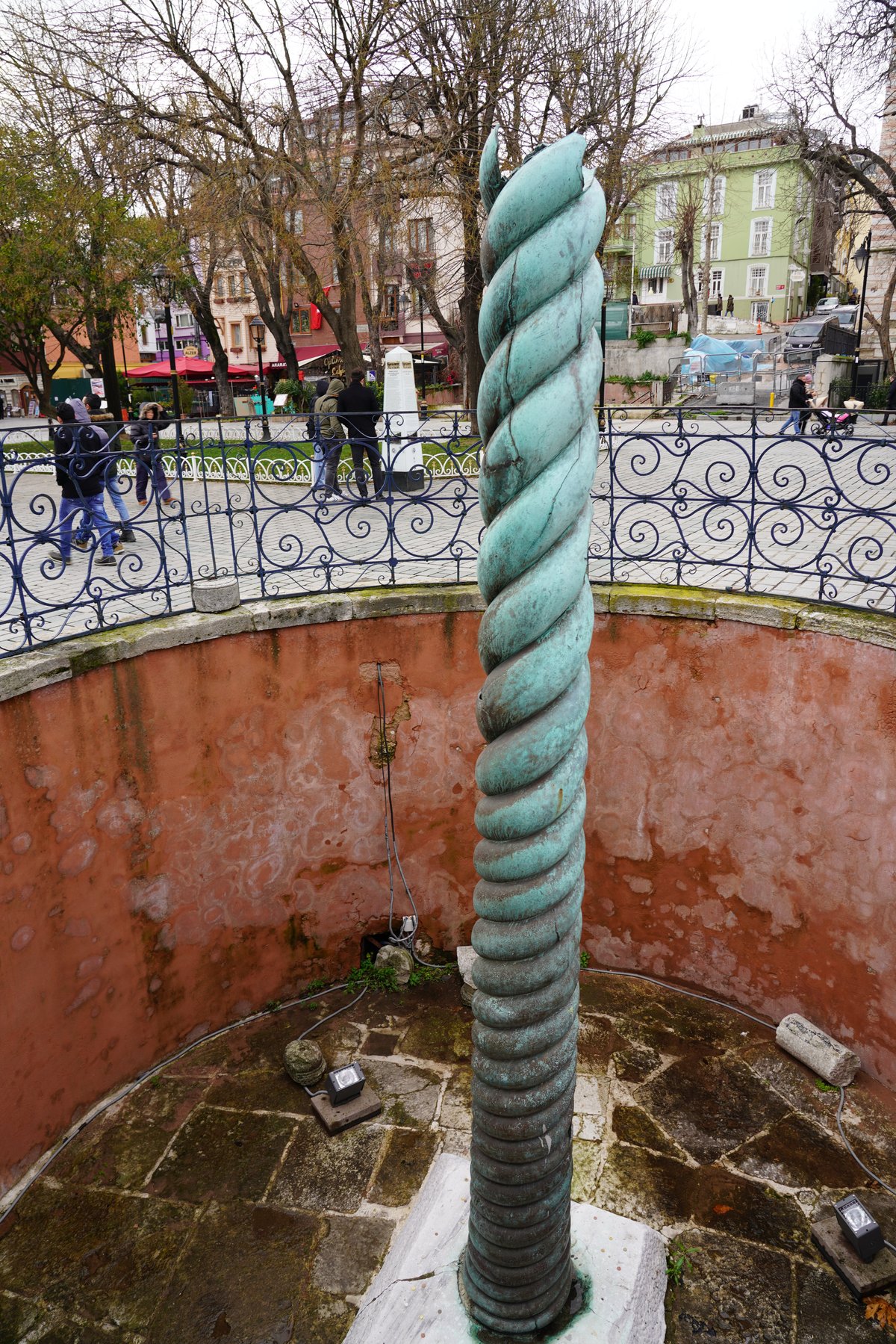
Visiting Sultanahmet Meydanı in Istanbul: History, Tickets, and Tips
Date of Publication: 19/07/2024
Introduction to Sultanahmet Meydanı
Sultanahmet Meydanı, also known as the Hippodrome of Constantinople, stands as one of the most historically rich and culturally significant sites in Istanbul, Turkey. This iconic square has been a witness to the grandeur of the Roman, Byzantine, and Ottoman empires, each leaving an indelible mark on its identity. Originally constructed in the 3rd century AD by Roman Emperor Septimius Severus and later expanded by Emperor Constantine the Great, Sultanahmet Meydanı served as the social and sporting hub of ancient Constantinople (source). The location’s rich history includes monumental events such as the Nika Riots of 532 AD, which dramatically altered the course of the city’s history (source). Following the Ottoman conquest in 1453, the square was repurposed for various public events and ceremonies, further embedding itself into the cultural tapestry of Istanbul. Today, Sultanahmet Meydanı is a cornerstone of the Sultanahmet district, a UNESCO World Heritage Site, and a must-visit for anyone looking to explore the layers of history that define this remarkable city (source).
Contents Overview
- Introduction
- History
- Ancient Origins and Byzantine Era
- The Nika Riots
- Ottoman Era
- Modern Era and Preservation
- Monuments and Structures
- The Obelisk of Theodosius
- The Serpent Column
- The Walled Obelisk
- Visitor Information
- Visiting Hours
- Ticket Prices
- Accessibility
- Travel Tips and Nearby Attractions
- Hagia Sophia
- Topkapi Palace
- Grand Bazaar
- Basilica Cistern
- Cultural Significance
- Conclusion
- FAQ
Exploring Sultanahmet Meydanı - History, Tickets, Visitor Information, and More
Introduction
Sultanahmet Meydanı, also known as the Hippodrome of Constantinople, is a historical and cultural hub in Istanbul, Turkey. This guide provides an in-depth look at the square’s rich history, significant monuments, and practical visitor information.
History
Ancient Origins and Byzantine Era
Sultanahmet Meydanı has a rich history that dates back to the Roman Empire. The site was originally constructed in the 3rd century AD by the Roman Emperor Septimius Severus. However, it was Emperor Constantine the Great who expanded and adorned the Hippodrome when he declared Byzantium (later Constantinople, now Istanbul) the new capital of the Roman Empire in 330 AD (source).
The Hippodrome served as the social and sporting center of Constantinople. It was primarily used for chariot races, which were immensely popular at the time. The structure could accommodate up to 100,000 spectators, making it one of the largest and most significant arenas of its kind in the ancient world. The Hippodrome was also adorned with various monuments and statues, many of which were brought from different parts of the empire.
The Nika Riots
One of the most significant events in the history of the Hippodrome was the Nika Riots of 532 AD. These riots were a result of political and social tensions between different factions within the city. The riots began in the Hippodrome and quickly spread throughout Constantinople, leading to widespread destruction and the deaths of tens of thousands of people. The riots were eventually quelled by Emperor Justinian I, who ordered his troops to massacre the rioters within the Hippodrome (source).
Ottoman Era
When the Ottoman Turks conquered Constantinople in 1453, the Hippodrome fell into disuse. The Ottomans, under Sultan Mehmed II, repurposed the area for various public events and ceremonies. The name “Sultanahmet Meydanı” comes from Sultan Ahmed I, who constructed the famous Blue Mosque (Sultan Ahmed Mosque) adjacent to the square in the early 17th century (source).
Modern Era and Preservation
In the modern era, Sultanahmet Meydanı has become one of Istanbul’s most visited tourist attractions. The square is part of the Sultanahmet district, which is a UNESCO World Heritage Site. Efforts have been made to preserve the historical monuments and structures within the square, ensuring that they remain accessible to future generations (source).
Monuments and Structures
The Obelisk of Theodosius
One of the most prominent monuments in the square is the Obelisk of Theodosius. Originally erected in the Temple of Karnak in Luxor, Egypt, around 1490 BC, the obelisk was brought to Constantinople by Emperor Theodosius I in 390 AD. The obelisk stands on a marble pedestal adorned with reliefs depicting Theodosius and his court (source).
The Serpent Column
Another ancient monument is the Serpent Column, which dates back to the 5th century BC. It was originally part of a larger bronze tripod dedicated to Apollo at Delphi, commemorating the Greek victory over the Persians at the Battle of Plataea. The column was brought to Constantinople by Constantine the Great and placed in the Hippodrome (source).
The Walled Obelisk
The Walled Obelisk, also known as the Constantine Obelisk, is another significant structure in the square. It was constructed in the 10th century by Emperor Constantine VII. Unlike the Obelisk of Theodosius, the Walled Obelisk is made of stone blocks and was originally covered with gilded bronze plaques, which were later removed during the Fourth Crusade (source).
Visitor Information
Visiting Hours
Sultanahmet Meydanı is open 24 hours a day, seven days a week. However, the adjacent museums and monuments may have specific visiting hours.
Ticket Prices
Entry to the square itself is free. However, some nearby attractions, such as the museums, may require a ticket. It’s advisable to check their official websites for the most current prices.
Accessibility
The square is easily accessible by public transportation, including the tram and bus services. It is also wheelchair accessible, making it convenient for all visitors.
Travel Tips and Nearby Attractions
- Hagia Sophia - Just a short walk from Sultanahmet Meydanı, this iconic former cathedral and mosque is now a museum.
- Topkapi Palace - Another nearby must-see, this palace was the residence of Ottoman sultans for centuries.
- Grand Bazaar - A bustling market offering a wide variety of goods, perfect for souvenir shopping.
- Basilica Cistern - An ancient underground water storage facility with stunning architecture.
Cultural Significance
Sultanahmet Meydanı is not just a historical site but also a cultural hub. The square hosts various cultural events, festivals, and public gatherings throughout the year. It is a place where history and modernity coexist, offering visitors a unique glimpse into Istanbul’s rich and diverse heritage.
Conclusion
The history of Sultanahmet Meydanı is a testament to the enduring legacy of Istanbul as a crossroads of civilizations. From its origins as a Roman Hippodrome to its transformation under the Ottomans and its current status as a UNESCO World Heritage Site, the square continues to captivate visitors with its historical and cultural significance.
FAQ
Q: What are the visiting hours for Sultanahmet Meydanı?
A: The square is open 24 hours a day, seven days a week.
Q: Is there an entrance fee for Sultanahmet Meydanı?
A: Entry to the square is free, but nearby attractions may have ticket prices.
Q: How can I get to Sultanahmet Meydanı?
A: The square is easily accessible by public transportation, including tram and bus services.
Call to Action
For more travel guides and updates, follow us on social media or download our app. Don’t forget to check out our other posts on Istanbul’s historical sites.
Summary and Key Takeaways
Sultanahmet Meydanı is more than just a historical site; it’s a living museum that encapsulates the essence of Istanbul’s multifaceted history. From its origins as a Roman Hippodrome to its transformation under the Ottomans and its current status as a UNESCO World Heritage Site, the square continues to be a focal point for both locals and tourists. The various monuments, such as the Obelisk of Theodosius and the Serpent Column, serve as tangible links to the past, offering a glimpse into the grandeur of bygone eras (source, source). The square’s accessibility and its proximity to other significant landmarks like the Hagia Sophia and Topkapi Palace make it an indispensable part of any visit to Istanbul. Whether you’re a history buff, a cultural enthusiast, or a casual traveler, Sultanahmet Meydanı offers a unique and enriching experience that highlights the enduring legacy of one of the world’s most fascinating cities. For those planning to visit, remember to check the visiting hours and ticket prices of nearby attractions to make the most of your trip. Stay updated with local events and consider joining a guided tour for a more comprehensive understanding of this iconic site. For more travel tips and updates, follow us on social media or download our mobile app Audiala.
Sources and Further Reading
- Britannica, Hippodrome of Constantinople. Retrieved from https://www.britannica.com/place/Hippodrome-of-Constantinople
- History.com, Constantinople. Retrieved from https://www.history.com/topics/ancient-history/constantinople
- UNESCO, Sultanahmet District. Retrieved from https://whc.unesco.org/en/list/356
- Atlas Obscura, Obelisk of Theodosius. Retrieved from https://www.atlasobscura.com/places/obelisk-of-theodosius
- Britannica, Serpent Column. Retrieved from https://www.britannica.com/topic/Serpent-Column
- Britannica, Sultan Ahmed Mosque. Retrieved from https://www.britannica.com/place/Istanbul/Sultan-Ahmed-Mosque
- Lonely Planet, Walled Obelisk. Retrieved from https://www.lonelyplanet.com/turkey/istanbul/attractions/walled-obelisk/a/poi-sig/1140557/360194
- Istanbul Clues, Sultanahmet Square. Retrieved from https://www.istanbulclues.com/sultanahmet-square/
- Istanbul Tourist Information, Obelisk of Theodosius. Retrieved from https://www.istanbul-tourist-information.com/en/attractions/obelisk-of-theodosius/
- Ancient.eu, Serpent Column. Retrieved from https://www.ancient.eu/Serpent_Column/
- Istanbul Clues, German Fountain. Retrieved from https://www.istanbulclues.com/german-fountain/
- Viator, Sultanahmet District Tours. Retrieved from https://www.viator.com/Istanbul-attractions/Sultanahmet-District/d585-a905
- Rome2Rio, Sultanahmet to Istanbul. Retrieved from https://www.rome2rio.com/s/Sultanahmet/Istanbul
- TripAdvisor, Istanbul Health and Safety. Retrieved from https://www.tripadvisor.com/Travel-g293974-s206/Istanbul-Turkey-Health.And.Safety.html
- Istanbul Clues, Photography Tips. Retrieved from https://www.istanbulclues.com/photography-tips-istanbul/
